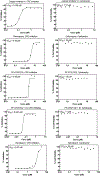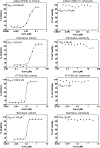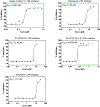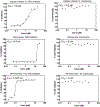A high-throughput response to the SARS-CoV-2 pandemic
- PMID: 38761981
- PMCID: PMC12182970
- DOI: 10.1016/j.slasd.2024.100160
A high-throughput response to the SARS-CoV-2 pandemic
Abstract
Four years after the beginning of the COVID-19 pandemic, it is important to reflect on the events that have occurred during that time and the knowledge that has been gained. The response to the pandemic was rapid and highly resourced; it was also built upon a foundation of decades of federally funded basic and applied research. Laboratories in government, pharmaceutical, academic, and non-profit institutions all played roles in advancing pre-2020 discoveries to produce clinical treatments. This perspective provides a summary of how the development of high-throughput screening methods in a biosafety level 3 (BSL-3) environment at Southern Research Institute (SR) contributed to pandemic response efforts. The challenges encountered are described, including those of a technical nature as well as those of working under the pressures of an unpredictable virus and pandemic.
Keywords: Antiviral; BSL-3; COVID; COVID-19; Coronavirus; Drug discovery; HTS; High-throughput; MERS; Pandemic; SARS; SARS-CoV; SARS-CoV-2; SARS2.
Copyright © 2024. Published by Elsevier Inc.
Conflict of interest statement
Declaration of competing interest The authors declare the following financial interests/personal relationships which may be considered as potential competing interests: Paige Vinson reports financial support was provided by National Institute of Allergy and Infectious Diseases. Paige Vinson reports a relationship with SLAS Discovery Editorial Board that includes: board membership. Other co-authors have salary support from NIH/NIAID in connection with the work in the manuscript. If there are other authors, they declare that they have no known competing financial interests or personal relationships that could have appeared to influence the work reported in this paper.
Figures









References
-
- Johnson NP, Mueller J. Updating the accounts: global mortality of the 1918–1920 “Spanish” influenza pandemic. Bull Hist Med 2002;76(1):105–15. - PubMed
Publication types
MeSH terms
Substances
Grants and funding
LinkOut - more resources
Full Text Sources
Medical
Research Materials
Miscellaneous

